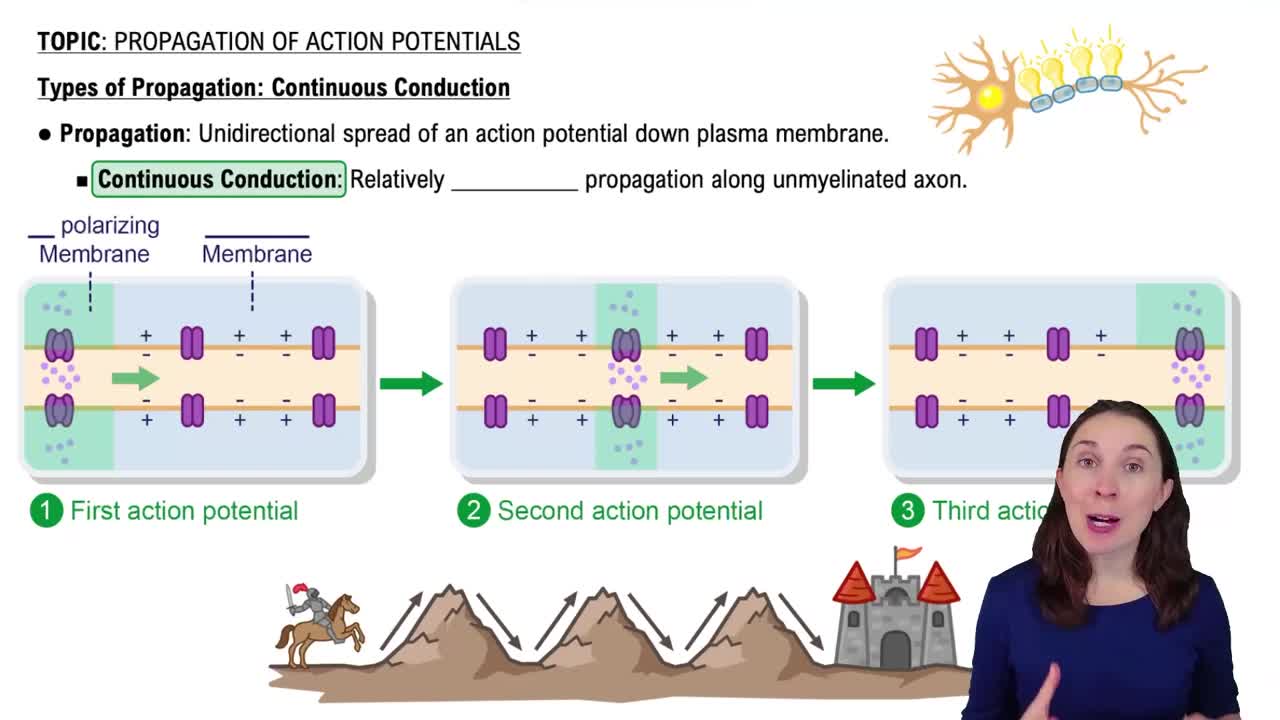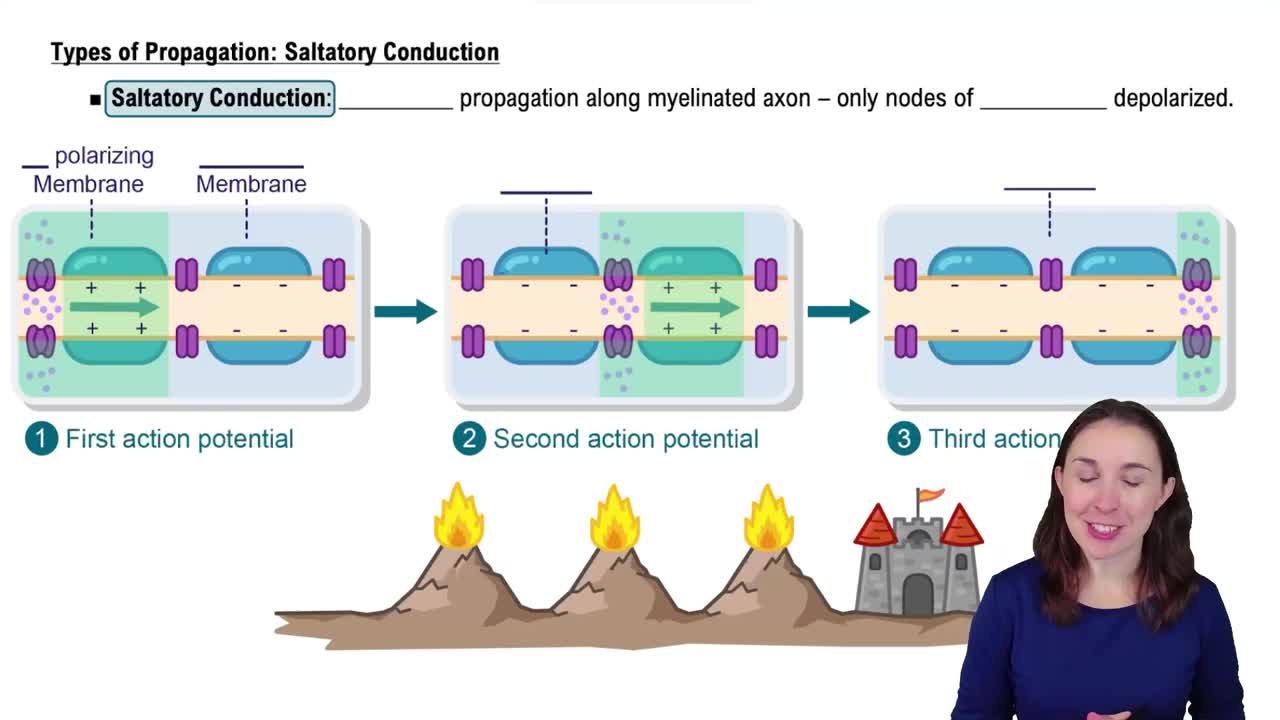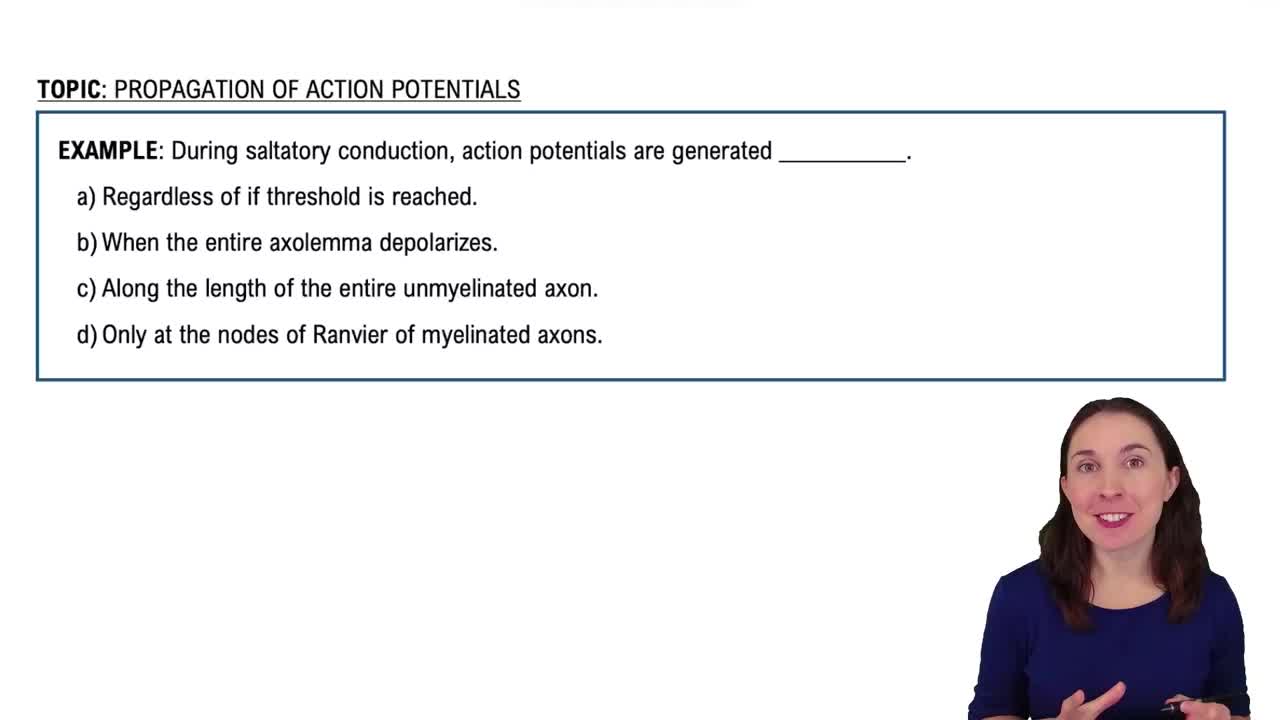Propagation of Action Potentials definitions Flashcards
 Back
BackPropagation of Action Potentials definitions
1/15
Terms in this set (15)
- PropagationThe unidirectional spread of an action potential down the axon membrane.
- Action PotentialA series of events involving depolarization and repolarization of the axon membrane.
- Continuous ConductionA slow propagation along unmyelinated axons where each segment depolarizes sequentially.
- Saltatory ConductionA rapid propagation along myelinated axons where action potentials leap between nodes of Ranvier.
- DepolarizationThe process where voltage-gated sodium channels open, allowing sodium ions to enter the axon.
- Refractory PeriodA period following an action potential during which the axon cannot be depolarized again.
- MyelinAn insulating layer around axons that speeds up neural communication by preventing current leakage.
- Nodes of RanvierGaps between myelin sheaths where depolarization occurs during saltatory conduction.
- Voltage-Gated Sodium ChannelsChannels that open in response to changes in membrane potential, allowing sodium ions to enter.
- Membrane PotentialThe electrical potential difference across the axon membrane, crucial for action potential propagation.
- Sodium IonsPositively charged ions that enter the axon during depolarization, contributing to action potential propagation.
- Current LeakageThe loss of electrical current from the axon, prevented by myelin in saltatory conduction.
- Unmyelinated AxonsAxons lacking myelin, resulting in slower continuous conduction of action potentials.
- Myelinated AxonsAxons covered with myelin, allowing for faster saltatory conduction of action potentials.
- Latin 'Saltare'The origin of the term 'saltatory', meaning to leap, describing the action potential's movement.



